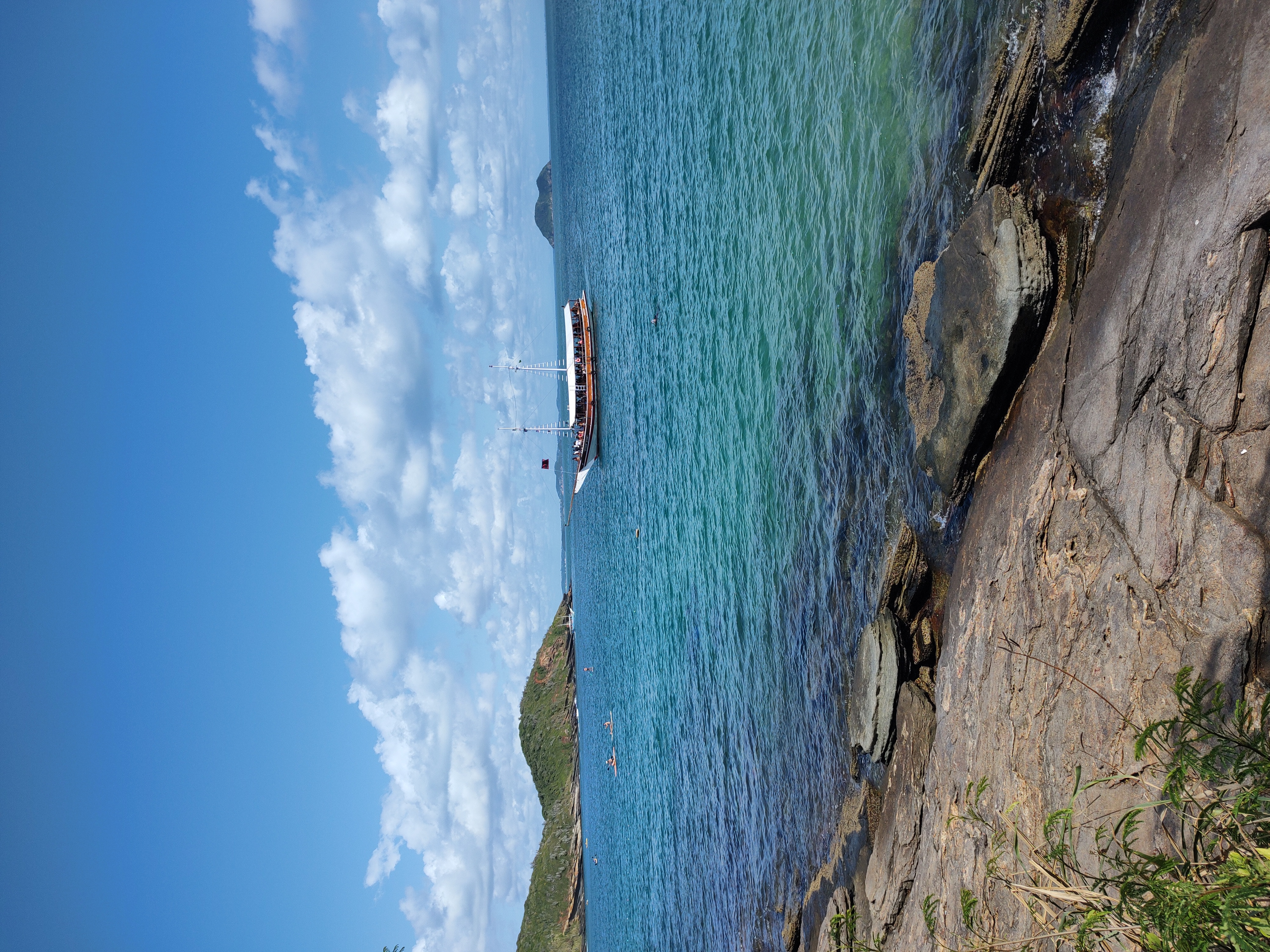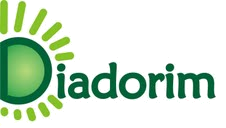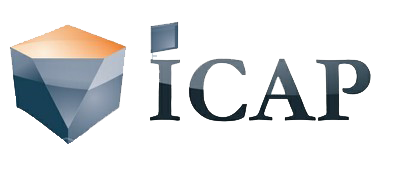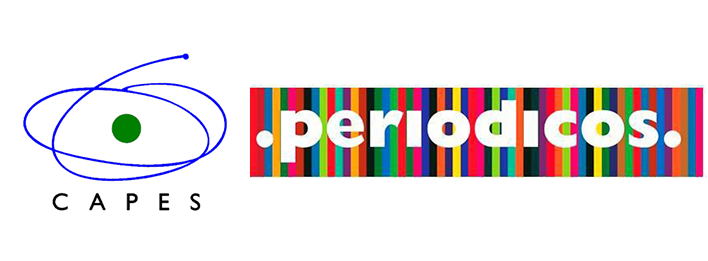MARKETING DE RELACIONAMENTO DA INDÚSTRIA HOTELEIRA ATRAVÉS DA REDE SOCIAL INSTAGRAM NA CRISE DA PANDEMIA COVID-19
Estudo de caso da rede de hotéis Accor Brasil
Palavras-chave:
COVID-19, Relationship marketing, Engagement, Empathic Communication, InstagramResumo
The COVID-19 pandemic brought the production process to a halt in the tourist chain, directly impacting the economic sphere and marketing communication between organizations in the segment and their interested public. The present work aims to identify whether the communication through the Instagram posts of the multinational hotel chain Accor was adapted to the COVID-19 pandemic scenario between December 2019 and June 2020 and the followers' level of engagement in its digital profile. The more-than-human netnography proposed by Lugosi & Quinton (2018) was adopted as a methodological approach, having as object of analysis the posts of the profile @all_latam (Accor América Latina) on Instagram and the behavior of the followers. We identified a follower appreciation regarding COVID-19 material. Therefore, hotel companies should produce crisis content related to increasing engagement on Social media posts
Referências
Aaker, D. A. (1996). Criando e administrando marcas de sucesso. São Paulo: Futura, 137-144.
Accor (s.d.). Our ambitions. Accor. Disponível em: https://group.accor.com/pt-BR/group/who-we-are/our-ambitions.
Altaf, J. G., Souza, C. P., Elerati, V. F., Nascimento, L. A., & Souza Costa, A. (2019). O uso do Instagram como ferramenta de marketing de relacionamento. Revista Vianna Sapiens, 10(1), 32-32. https://doi.org/10.31994/rvs.v10i1.578
Alves, F. G., Costa, H. S., & Perinotto, A. R. C. (2017). 7. Instagram como ferramenta para fidelização de clientes: Fotografia, Redes Sociais e Turismo. Marketing & Tourism Review, 2(2), 1-21. https://doi.org/10.29149/mtr.v2i2.4562
Andersson, H. (2019). Designing digital nudges for sustainable travel decisions. Master thesis in Interaction Technology and Design. 50 p. Suécia. Umeä university
Anggraeni, A. (2015). Effects of brand love, personality and image on word of mouth; the case of local fashion brands among young consumers. Procedia-Social and Behavioral Sciences, 211, 442-447. https://doi.org/10.1016/j.sbspro.2015.11.058
Anguera-Torrell, O., Aznar-Alarcón, J. P., & Vives-Perez, J. (2021). COVID-19: Hotel industry response to the pandemic evolution and to the public sector economic measures. Tourism Recreation Research, 46(2), 148-157. https://doi.org/10.1080/02508281.2020.1826225
Anholt, S. (2003). Branding places and nations In R. Clifton (ed).n: Brands and Branding. London: The Economist Newspaper, 2003.
Anholt, S. (2005). Some important distinctions in place branding. Place branding Public Dipl, 1(2), 116-121. https://doi.org/10.1057/palgrave.pb.5990011
Anholt, S. (2007). Competitive Identity: The New Brand Management for Nations, Cities and Regions, Palgrave Macmillan, 2007.
Arief, N. N., & Pangestu, A. B. (2021). Perception and sentiment analysis on empathic brand initiative during the Covid-19 pandemic: Indonesia perspective. Journal of Creative Communications, 09732586211031164. https://doi.org/10.1177%2F09732586211031164
Arman, A. A., & Sidik, A. P. (2019, November). Measurement of Engagement Rate in Instagram (Case Study: Instagram Indonesian Government Ministry and Institutions). In 2019 International Conference on ICT for Smart Society (ICISS) (Vol. 7, pp. 1-6). IEEE. https://doi.org/10.1109/ICISS48059.2019.8969826
Arora, A., Bansal, S., Kandpal, C., Aswani, R., & Dwivedi, Y. (2019). Measuring social media influencer index-insights from Facebook, Twitter and Instagram. Journal of Retailing and Consumer Services, 49, 86-101. https://doi.org/10.1016/j.jretconser.2019.03.012
Barbosa, D. P., & Medaglia, J. (2020). Tecnologia digital, turismo e os hábitos de consumo dos viajantes contemporâneos. Marketing & Tourism Review, 4(2). https://doi.org/10.29149/mtr.v4i2.5394
Bastiaansen, M., Straatman, S., Mitas, O., Stekelenburg, J., & Jansen, S. (2022). Emotion measurement in tourism destination marketing: A comparative electroencephalographic and behavioral study. Journal of Travel Research, 61(2), 252-264. https://doi.org/10.1177/0047287520981149
Blog Bume (2020). 15 ações para aumentar o engajamento no Instagram em 2020. Disponível em: <https://blog.bume.com/engajamento-no-instagram/>. Acessado em: 20 dez. 2021.
Blom, S. S., Gillebaart, M., De Boer, F., van der Laan, N., & De Ridder, D. T. (2021). Under pressure: Nudging increases healthy food choice in a virtual reality supermarket, irrespective of system 1 reasoning. Appetite, 160, 105116. https://doi.org/10.1016/j.appet.2021.105116
Brasil (2020, Março 20) DECRETO LEGISLATIVO Nº 6, DE 2020. Brasil. Disponível em: http://www.planalto.gov.br/ccivil_03/portaria/DLG6-2020.htm
Bulchand-Gidumal, J. (2022). Post-COVID-19 recovery of island tourism using a smart tourism destination framework. Journal of Destination Marketing & Management, 23, 100689. https://doi.org/10.1016/j.jdmm.2022.100689
Carmona, G. (2017). Netnografía aplicada en estudios urbanos. ACE: architecture, city and environment, 11(33), 137-154.
Sampaio, V., & Tavares, C. (2017). Marketing digital: O poder da influência das redes sociais na decisão de compra do consumidor universitário da cidade de Juazeiro do Norte-CE. Revista Científica Semana Acadêmica, Fortaleza, 1(104), 1-26.
Chamie, B. C., & Ikeda, A. A. (2015). O valor para o cliente no varejo. Brazilian Business Review, 12(2), 49. https://doi.org/10.15728/bbr.2015.12.2.3
Chen, C. C., Zou, S., & Gao, J. (2020). Towards the recovery mechanisms of leisure travel experiences: does the length of vacation matter?. Journal of Travel & Tourism Marketing, 37(5), 636-648. https://doi.org/10.1080/10548408.2018.1525469
CNN (2020, July). Sick of working from home? Work at a hotel instead. CNN. Disponível em: https://edition.cnn.com/travel/article/work-remote-hotel-room-covid-19/index.html.
Coelho, M. F., & Mayer, V. F. (2020). Gestão de serviços pós-covid: o que se pode aprender com o setor de turismo e viagens?. Gestão e Sociedade, 14(39), 3698-3706. https://doi.org/10.21171/ges.v14i39.3306
Cozzio, C., Volgger, M., Taplin, R., & Woodside, A. G. (2020). Nurturing tourists' ethical food consumption: Testing the persuasive strengths of alternative messages in a natural hotel setting. Journal of Business Research, 117, 268-279. https://doi.org/10.1016/j.jbusres.2020.05.050
Damnjanović, V., Lončarić, D., & Dlačić, J. (2020). TEACHING CASE STUDY: Digital marketing strategy of Accor Hotels: shaping the future of hospitality. Tourism and hospitality management, 26(1), 233-244.
de Faria Nogueira, M. A. (2021). #visitedepois. Os desafios do turismo em tempos de pandemia de COVID-19. O caso da Região da Catalunha, Espanha" . Marketing & Tourism Review, 6(2). https://doi.org/10.29149/mtr.v6i2.7228
Della Corte, V., Del Gaudio, G., Nevola, G., Di Taranto, E., & Luongo, S. (2021). Destination management during the health emergency: A bibliometric analysis. University of South Florida M3 Center Publishing, 5(2021), 27. https://www.doi.org/10.5038/9781955833035
Diário do Nordeste (2020, 12 maio). Turismo cearense perde R$ 1,32 bi em apenas 15 dias com pandemia. Diário do Nordeste. Fortaleza. Disponível em: <https://diariodonordeste.verdesmares.com.br/editorias/negocios/online/turismo-cearense-perde-r-1-32-bi-em-apenas-15-dias-com-pandemia-1.2244890>. Acesso em: 20 mai. 2020.
Dolnicar, S. (2022). Segmentation. In D. Buhalis. (ed) Encyclopedia of tourism management and marketing. 1–3. Edward Elgar Publishing. https://doi.org/10.4337/9781800377486.segmentation
Fatanti, M. N., & Suyadnya, I. W. (2015). Beyond user gaze: How Instagram creates tourism destination brand?. Procedia-Social and Behavioral Sciences, 211, 1089-1095. https://doi.org/10.1016/j.sbspro.2015.11.145
Feitosa, W. R., & Barbosa, R. (2021). Generation Z and technologies on museums – Its influence on perceptions about Quality, Arousal and E-WOM Intentions. Marketing & Tourism Review, 5(2). https://doi.org/10.29149/mtr.v5i2.5766
Femenia-Serra, F., Gretzel, U., & Alzua-Sorzabal, A. (2022). Instagram travel influencers in# quarantine: Communicative practices and roles during COVID-19. Tourism Management, 89, 104454. https://doi.org/10.1016/j.tourman.2021.104454
Forbes (2020, April). Why Australian Travelers Are Moaning About 5-Star Stays In Hotel Quarantine. Forbes. Disponível em: https://www.forbes.com/sites/tamarathiessen/2020/04/04/australian-travelers-complain-about-5-star-hotel-quarantine/?sh=3fec958a6dbe.
Fragoso, S., Recuero, R., & Amaral, A. (2011). Métodos de pesquisa para internet. Porto Alegre: Sulina, 1.
Gabriel, M. (2010). Marketing na era digital: conceitos, plataformas e estratégias. Novatec Editora.
Gössling, S., Scott, D., & Hall, C. M. (2020). Pandemics, tourism and global change: a rapid assessment of COVID-19. Journal of Sustainable Tourism, 29(1), 1-20. https://doi.org/10.1080/09669582.2020.1758708
Hall, C. M., & Valentin, A. (2005). 15 Content Analysis. In B. W. Ritchie, P. Burns, & C. Palmer (eds) Tourism research methods: Integrating Theory with Practice, Cabi.
Heck, A. C. C., Braun, J. R. R., Feliciano, A., & Gomez, L. S. R. (2015). A percepção do DNA de marca por seu público: caso da cooperativa de agricultores familiares de Criciúma, SC. In IDEMi IV-IV Conferência Internacional de Integração do Design, Engenharia e Gestão para Inovação.
Henche, B. G. (2018). Urban experiential tourism marketing: Use of social media as communication tools by the food markets of Madrid. Journal of Tourism Analysis: Revista de Análisis Turístico. https://doi.org/10.1108/JTA-01-2018-0002
Henderson, P. W., & Cote, J. A. (1998). Guidelines for selecting or modifying logos. Journal of marketing, 62(2), 14-30. https://doi.org/10.1177/002224299806200202
Herbst, U., & Merz, M. A. (2011). The industrial brand personality scale: Building strong business-to-business brands. Industrial marketing management, 40(7), 1072-1081. https://doi.org/10.1016/j.indmarman.2011.09.003
Hooley, G. J., Saunders, J. A., & Piercy, N. F. (2001). Estratégia de marketing e posicionamento competitivo. Financial Times/Prentice Hall.
Hosany, S., Martin, D., & Woodside, A. G. (2021). Emotions in tourism: Theoretical designs, measurements, analytics, and interpretations. Journal of Travel Research, 60(7), 1391-1407. https://doi.org/10.1177/0047287520937079
Hunter, G. L. (2006). The role of anticipated emotion, desire, and intention in the relationship between image and shopping center visits. International Journal of Retail & Distribution Management. 34(10), 709-721. https://doi.org/10.1108/09590550610691310
Japutra, A., & Situmorang, R. (2021). The repercussions and challenges of COVID-19 in the hotel industry: Potential strategies from a case study of Indonesia. International Journal of Hospitality Management, 95, 102890. https://doi.org/10.1016/j.ijhm.2021.102890
Jian, Y., Yu, I. Y., Yang, M. X., & Zeng, K. J. (2020). The impacts of fear and uncertainty of COVID-19 on environmental concerns, brand trust, and behavioral intentions toward green hotels. Sustainability, 12(20), 8688. https://doi.org/10.3390/su12208688
Jin, S. A. A. (2012). The potential of social media for luxury brand management. Marketing Intelligence & Planning. 30(7), 687-699. https://doi.org/10.1108/02634501211273805
Keller, K. L., & Richey, K. (2006). The importance of corporate brand personality traits to a successful 21st century business. Journal of Brand management, 14(1), 74-81. https://doi.org/10.1057/palgrave.bm.2550055
Kim, J., Cui, Y. G., Choi, C., Lee, S. J., & Marshall, R. (2020). The influence of preciseness of price information on the travel option choice. Tourism Management, 79, 104012. https://doi.org/10.1016/j.tourman.2019.104012
Kotler, P., & Keller, K. L. (2006). Administração de marketing: a bíblia do marketing. 12ª edição.
Kotler, P., & Keller, K. L. (2012). Marketing Management, 14 ed. Pearson.
Kotler, P., & Keller, K. L. (2016). A framework for marketing management (p. 352). Boston, MA: Pearson.
Kotler, P.; Kartajaya, H., & Setiawan, S. (2016). Marketing 4.0: do tradicional ao digital. São Paulo: SP: Sextante
Kozinets, R.V. (2020), Netnography: The Essential Guide to Qualitative Social Media Research. SAGE Publications.
Kozinets, R. V., & Gretzel, U. (2022). Netnography. In D. Buhalis (ed), Encyclopedia of Tourism Management and Marketing. 1-3. https://doi.org/10.4337/9781800377486.netnography
Kozinets, R. V., Ferreira, D. A., & Chimenti, P. (2021). How Do Platforms Empower Consumers? Insights from the Affordances and Constraints of Reclame Aqui. Journal of Consumer Research. https://doi.org/10.1093/jcr/ucab014
Kozinets, R. V., Scaraboto, D., & Parmentier, M. A. (2018). Evolving netnography: How brand auto-netnography, a netnographic sensibility, and more-than-human netnography can transform your research. Journal of Marketing Management, 34(3-4), 231-242. https://doi.org/10.1080/0267257X.2018.1446488
Marconi, M. D. A., & Lakatos, E. M. (2003). Fundamentos de metodologia científica. 5. ed.-São Paulo: Atlas.
Las Casas, A. L. (2005). Marketing-Conceitos, exercícios, casos. 7ºEdição. São Paulo: Editora Atlas.
Lamb, C. W., Hair, J. F., & McDaniel, C. (2011). Marketing. 11º edition. Cengage Learning.
Li, J., Xu, L., Tang, L., Wang, S., & Li, L. (2018). Big data in tourism research: A literature review. Tourism Management, 68, 301-323. https://doi.org/10.1016/j.tourman.2018.03.009
Li, Y., Yao, J., & Chen, J. (2021). The negative effect of scarcity cues on consumer purchase decisions in the hospitality industry during the COVID-19 pandemic. International Journal of Hospitality Management, 94, 102815. https://doi.org/10.1016/j.ijhm.2020.102815
Loureiro, S. M. C., & Sarmento, E. M. (2019). Exploring the determinants of Instagram as a social network for online consumer-brand relationship. Journal of Promotion Management, 25(3), 354-366. https://doi.org/10.1080/10496491.2019.1557814
Lugosi, P., & Quinton, S. (2018). More-than-human netnography. Journal of Marketing Management, 34(3-4), 287-313. https://doi.org/10.1080/0267257X.2018.1431303
Luo, Q., & Zhai, X. (2017). "I will never go to Hong Kong again!" How the secondary crisis communication of "Occupy Central" on Weibo shifted to a tourism boycott. Tourism Management, 62, 159-172. https://doi.org/10.1016/j.tourman.2017.04.007
Maggard, J. P. (1976). Positioning Revisited: Is positioning something old, new, or borrowed? Journal of Marketing, 40(1), 63-66. https://doi.org/10.1177/002224297604000111
Maurya, U. K., & Mishra, P. (2012). What is a brand? A Perspective on Brand Meaning. European Journal of Business and Management,4(3), 122-133.
Mayer, V. F., & Coelho, M. D. F. (2021). Sonhos interrompidos: memórias e emoções de experiências de viagem durante a propagação da Covid-19. Revista Brasileira de Pesquisa em Turismo, 15. https://doi.org/10.7784/rbtur.v15i1.2192
Mich, L. (2022). AI and Big Data in Tourism. In R. Egger. Applied Data Science in Tourism: Interdisciplinary Approaches, Methodologies, and Applications. Springer International Publishing. https://doi.org/10.1007/978-3-030-88389-8_1
Mizael, G. A., Castro, C. C. de, & Leme, P. H. M. V. (2021). Personalidade da marca: avaliação da marca de uma instituição de ensino superior. Marketing & Tourism Review, 6(1). https://doi.org/10.29149/mtr.v6i1.6284
Nan, J. (2020). Under Covid-19, challenges and opportunities for hospitality and tourism industry of China. J. Tour. Hosp, 9(440), 1-3. https://doi.org/10.35248/2167-0269.20.9.440
Nawijn, J. (2011). Determinants of daily happiness on vacation. Journal of Travel Research, 50(5), 559-566. https://doi.org/10.1177/0047287510379164
Niada, A. C. M, & Baptista, P. (2013). Hierarquia de metas do consumidor para diferentes níveis de autoconexão com a marca: um estudo sobre a relação dos corredores de rua com a marca de seu tênis de corrida. Revista de Administração Mackenzie,14(5),140-176. https://doi.org/10.1590/S1678-69712013000500006
Noronha, A. M. M. S. (2018). Marketing de Relacionamento: Ferramenta CRM para Fidelização de Associados. Trabalho de Conclusão de Curso de MBA em Marketing. Unijuí. Rio Grande do Sul. 18 p.
OMS, Organização Mundial da Saúde (2020, March, 11). WHO Director-General's opening remarks at the media briefing on COVID-19 - 11 March 2020. World Health Organization. Disponível em: https://www.who.int/director-general/speeches/detail/who-director-general-s-opening-remarks-at-the-media-briefing-on-covid-19---11-march-2020.
Oliveira, B., & Campomar, M. C. (2007). Revisitando o posicionamento em marketing. REGE Revista de Gestão, 14(1), 41-52. https://doi.org/10.5700/issn.2177-8736.rege.2007.36589
Oliveira, M. O. R., & Luce, F. B. (2011). O valor da marca: conceitos, abordagens e estudos no Brasil. Revista Eletrônica de Administração,17(2), pp. 502-529.
Paniagua, J., & Sapena, J. (2014). Business performance and social media: Love or hate?. Business horizons, 57(6), 719-728. https://doi.org/10.1016/j.bushor.2014.07.005
Parente, U. L., & Laus-Gomes, V. (2020). Storytelling-como contar histórias sobre marcas que não têm uma boa história para contar. Diálogo com a Economia Criativa, 5(15), 95-112. http://doi.org/10.22398/2525-2828.51595-112
Peres, C. (2017, 25 de julho). Instagram: rede social para com partilhar fotos e vídeos. Techtudo. Disponível em: https://www.techtudo.com.br/tudo-sobre/instagram.html.
Perinotto, A. R. C., Belfort Simões, S., Mesquita de Sousa, S. ., & de Souza Braga, S. (2021). IMPACTO DAS PLATAFORMAS DIGITAIS NA OFERTA DE MEIOS DE HOSPEDAGEM: COMPARATIVO DE VENDAS ENTRE BOOKING.COM E AIRBNB. Marketing & Tourism Review, 5(2). https://doi.org/10.29149/mtr.v5i2.5940
Perinotto, A. R. C, Soares, J. R. R. (2020) Photographic Image, Credibility, and Consumption of Tourism in the Digital Era. In Santos, J. D., Silva, O. L. (eds.). (2020) Digital marketing strategies for tourism, hospitality, and airline industries. IGI-Global. ISBN 9781522597834 (hardcover) | ISBN 9781522597841 (paperback) | ISBN 9781522597858 (ebook).
Plog, S. C. (1974). Why destination areas rise and fall in popularity. Cornell hotel and restaurant administration quarterly, v. 14, n. 4, p.
Richardson, A. J., & Jones, D. B. (2007). Professional "brand", personal identity and resistance to change in the Canadian accounting profession: A comparative history of two accounting association merger negotiations. Accounting History, 12(2), 135-164. https://doi.org/10.1177/1032373207076035
Robina-Ramírez, R., Medina-Merodio, J. A., Moreno-Luna, L., Jiménez-Naranjo, H. V., & Sánchez-Oro, M. (2021). Safety and health measures for COVID-19 transition period in the hotel industry in Spain. International Journal of Environmental Research and Public Health, 18(2), 718. https://doi.org/10.3390/ijerph18020718
Rocha, P. J., & Montardo, S. P. (2005). Netnografia: incursões metodológicas na cibercultura. E-Compós, 4. https://doi.org/10.30962/ec.55
Saller, R. P. (1984) "Família, Domus", and the Roman Conception of the Family. Phoenix, 38(4), 336-355.
Santos, S. R., da Silva, G. P. F., Maia, L. F., Souza Neto, V. R., & da Silva, S. R. X. (2017). 8. Paisagem Sensorial e Turismo: Estudo sobre as Percepções dos Turistas em Cidade Patrimônio Cultural da Humanidade no Brasil. Marketing & Tourism Review, 2(2). https://doi.org/10.29149/mtr.v2i2.4563
Santos, S. R., Souza Neto, V. R., Pereira, L. R. S., Gândara, J. M. G., & da Silva, S. R. X. (2016). Destino turístico inteligente: acessibilidade no centro histórico de São Luís–Maranhão, um estudo sobre a reputação online no TripAdvisor. Marketing & Tourism Review, 1(2). https://doi.org/10.29149/mtr.v1i2.3843
Serralvo, F. A., & Furrier, M. T. (2004). Fundamentos do posicionamento de marcas: uma revisão teórica. Anais do VII Seminários em Administração.
Silva, E. V., & Mendes Filho, L. (2015). Internet e redes sociais no ambiente de trabalho: Uma análise com funcionários do setor hoteleiro da cidade de Natal (Rio Grande do Norte, Brasil). Turismo e Sociedade, 8(2), 321-341. . https://doi.org/10.5380/tes.v8i2.39071
Siqueira, A. (2020, Março) Três estágios do marketing no coronavírus. Meio & Mensagem. São Paulo. Disponível em: <https://www.meioemensagem.com.br/home/opiniao/2020/03/26/tres-estagios-do-marketing-no-coronavirus.html>. Acesso em: 20 mai. 2020.
Sonis, J. D., Kennedy, M., Aaronson, E. L., Baugh, J. J., Raja, A. S., Yun, B. J., & White, B. A. (2020). Humanism in the age of COVID-19: renewing focus on communication and compassion. Western Journal of Emergency Medicine, 21(3), 499. https://doi.org/10.5811/westjem.2020.4.47596
Ståhlberg, M., & Maila, V. (2012). Shopper marketing: How to increase purchase decisions at the point of sale. Kogan Page Publishers.
Starcevic, S. (2015). The origin and historical development of branding and advertising in the old civilizations of Africa, Asia and Europe. Marketing, 46(3), 179-196.
Steinhoff, L., & Palmatier, R. W. (2021). Commentary: Opportunities and challenges of technology in relationship marketing. Australasian Marketing Journal, 29(2), 111-117. https://doi.org/10.1016/j.ausmj.2020.07.003
Stephen, A. T. (2016). The role of digital and social media marketing in consumer behavior. Current opinión in Psychology, 10, 17-21. https://doi.org/10.1016/j.copsyc.2015.10.016
Souza-Neto, V., Marques, O., Mayer, V. F., & Lohmann, G. (2022). Lowering the harm of tourist activities: a systematic literature review on nudges. Journal of Sustainable Tourism, 1-22. https://doi.org/10.1080/09669582.2022.2036170
Souza Neto, V. R., & Marques, O. (2021). Rural tourism fostering welfare through sustainable development: A conceptual approach. In A. R. C. Perinotto, V. F. Mayer, & J. R. R. Soares (eds.). Rebuilding and restructuring the tourism industry: Infusion of happiness and quality of life. 38-57. IGI Global. https://doi.org/10.4018/978-1-7998-7239-9.ch003
Thaler, R. H., & Sunstein, C. R. (2008). Nudge: Improving decisions about health, wealth, and happiness. Yale University Press.
Tildesley, A. E., & Coote, L. V. (2009). This brand is me: A social identity based measure of brand identification. In NA-Advances in Consumer Research, 36, Association for Consumer Research, 627-628.
Van Dijck, J. (2009). Users like you? Theorising agency in user-generated content. Me-dia, culture & society, 31(1), 41-58. https://doi.org/10.1177/0163443708098245
Van Mierlo, T. (2014). The 1% rule in four digital health social networks: an observa-tional study. Journal of medical Internet research, 16(2), 1-9. https://doi.org/10.2196/jmir.2966
Viana, J. P., Mayer, V. F., & de Souza Neto, V. R. (2020). Experience sharing about hotels on TripAdvisor: motivation and preferences of Brazilian tourists. Marketing & Tourism Review, 5(1). https://doi.org/10.29149/mtr.v5i1.5907
Yang, K. C., Pierri, F., Hui, P. M., Axelrod, D., Torres-Lugo, C., Bryden, J., & Menczer, F. (2021). The COVID-19 infodemic: twitter versus facebook. Big Data & Society, 8(1), 20539517211013861. https://doi.org/10.1177/20539517211013861
Yang, W., Zhang, Y., & Wang, Y. C. (2022). Would Travel Experiences or Possessions Make People Happier?. Journal of Travel Research, 00472875211064631. https://doi.org/10.1177/00472875211064631
Wan, E. W., Xu, J., & Ding, Y. (2014). To be or not to be unique? The effect of social exclusion on consumer choice. Journal of Consumer Research, 40(6), 1109-1122. https://doi.org/10.1086/674197
Wen, T., Leung, X. Y., Li, B., & Hu, L. (2021). Examining framing effect in travel package purchase: An application of double-entry mental accounting theory. Annals of Tourism Research, 90, 103265. https://doi.org/10.1016/j.annals.2021.103265
Yuheng, O., & Dolnicar, S. (2021). Can disasters improve the tourism industry ? The role of normative , cognitive and relational expectations in shaping industry response to disaster-induced disruption. Annals of Tourism Research, xxxx, p. 103288, 2021. https://doi.org/10.1016/j.annals.2021.103288
Zhu, O. Y., Grün, B., & Dolnicar, S. (2021). Tourism and vaccine hesitancy. Annals of Tourism Research. https://doi.org/10.1016%2Fj.annals.2021.103320
Downloads
Publicado
Como Citar
Edição
Seção
Licença
Copyright (c) 2022 Marco Antônio Borges Fontgalland, Wellington Araujo Junior, André Riani Costa Perinotto, Valério Souza-Neto, Letícia Santos-Silva

Este trabalho está licenciado sob uma licença Creative Commons Attribution 4.0 International License.
Autores que publicam nesta revista concordam com os seguintes termos:
- Autores mantém os direitos autorais e concedem à revista, sem ônus para a mesma, o direito de primeira publicação, com o trabalho simultaneamente licenciado sob a Licença Creative Commons Attribution que permite o compartilhamento do trabalho com reconhecimento da autoria e publicação inicial nesta revista
- Autores têm autorização para assumir contratos adicionais separadamente, para distribuição não-exclusiva da versão do trabalho publicada nesta revista (ex.: publicar em repositório institucional ou como capítulo de livro), com reconhecimento de autoria e publicação inicial nesta revista.
- Autores assumem exclusiva responsabilidade pelas suas opiniões emitidas nos trabalhos publicados nesta revista
















